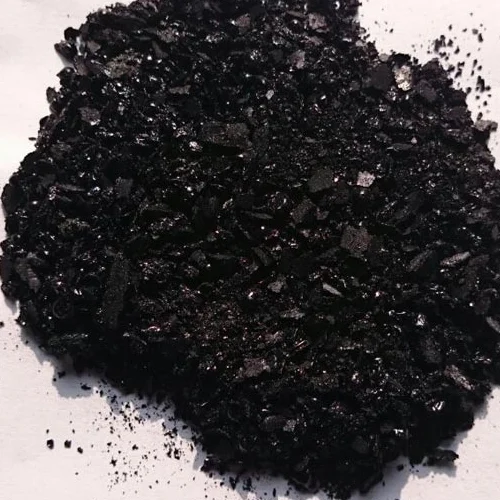indigo dye source products
Indigo Dye A Journey from Source to Fabric
Indigo dye has a rich history that spans thousands of years, making it one of the oldest and most popular dyes used in textile production. The allure of indigo lies not only in its deep blue hue but also in the fascinating journey it takes from natural sources to finished textile products. This article explores the origins, sources, production processes, and contemporary uses of indigo dye.
Origins of Indigo Dye
The use of indigo dye dates back nearly 6,000 years, with evidence of its use found in ancient civilizations such as the Egyptians, Indians, and Chinese. The name “indigo” is derived from the Latin term “indicum,” meaning “from India,” as India was historically one of the primary sources of this dye. The ancient peoples discovered that certain plants could yield a vibrant blue dye, leading to the cultivation of indigo-producing plants across various cultures.
Sources of Indigo Dye
Indigo dye is primarily derived from two sources natural plants and synthetic processes. The most notable natural source is the indigofera plant, particularly varieties like Indigofera tinctoria, which thrives in tropical and subtropical regions. The leaves of these plants contain a precursor compound called indican, which, upon fermentation, converts into indigo.
Other plants, such as woad (isatis tinctoria) also yield indigo but are less commonly used today, largely due to the efficiency of indigofera. Despite advancements in synthetic dye technology, many artisans and eco-conscious brands still prefer natural indigo for its environmental benefits and rich cultural heritage.
Traditional Extraction Process
The traditional method of extracting indigo dye from plants is a labor-intensive process. First, the leaves of the indigo plant are harvested and soaked in water to begin fermentation. This fermentation process breaks down the indican, releasing indigo into a liquid state. After several days, the liquid is turned into a thick paste by aeration, resulting in indigo dye that can be used for dyeing fabrics.
indigo dye source products

The advantages of using natural indigo include its biodegradability and lower environmental impact compared to chemical dyes. Moreover, the shades of blue produced can vary widely, providing artisans the opportunity to create unique textiles.
Modern Techniques and Applications
With the onset of the industrial revolution and the subsequent development of synthetic dyes, indigo became more accessible. Synthetic indigo contains the same molecular structure as natural indigo but is produced through chemical processes that often have negative environmental impacts. Today, synthetic indigo is predominantly used in the denim industry, providing the deep blue color in jeans that have become a staple in modern fashion.
However, in recent years, there has been a resurgence of interest in natural dyes, particularly among sustainable fashion brands and artisans. Consumers are increasingly aware of the environmental footprint of their clothing, prompting a demand for textiles dyed with natural indigo. This shift has encouraged some manufacturers to revive traditional indigo dyeing techniques, integrating them with modern production methods to create eco-friendly products.
Cultural Significance
Indigo dye is not merely a textile colorant; it holds cultural significance in various regions. In countries like Japan, indigo dyeing has become an art form known as aizome, which reflects centuries of tradition and craftsmanship. Each region has its own unique indigo dyeing techniques that tell stories of cultural identity, heritage, and community.
Conclusion
Indigo dye, with its mesmerizing depth and cultural roots, represents an intricate journey from plant to fabric. As the world leans towards sustainability, the revival of natural indigo dyeing practices offers not only a celebration of heritage but also a step towards more eco-friendly textile production. Whether sourced from traditional practices or modern synthetic processes, indigo continues to enchant and inspire, confirming its place in the textile industry and beyond. By embracing both its historic origins and contemporary applications, indigo dye remains a vital and beautiful part of our global cultural tapestry.
-
The Timeless Art of Denim Indigo Dye
NewsJul.01,2025
-
The Rise of Sulfur Dyed Denim
NewsJul.01,2025
-
The Rich Revival of the Best Indigo Dye
NewsJul.01,2025
-
The Enduring Strength of Sulphur Black
NewsJul.01,2025
-
The Ancient Art of Chinese Indigo Dye
NewsJul.01,2025
-
Industry Power of Indigo
NewsJul.01,2025
-
Black Sulfur is Leading the Next Wave
NewsJul.01,2025

Sulphur Black
1.Name: sulphur black; Sulfur Black; Sulphur Black 1;
2.Structure formula:
3.Molecule formula: C6H4N2O5
4.CAS No.: 1326-82-5
5.HS code: 32041911
6.Product specification:Appearance:black phosphorus flakes; black liquid

Bromo Indigo; Vat Bromo-Indigo; C.I.Vat Blue 5
1.Name: Bromo indigo; Vat bromo-indigo; C.I.Vat blue 5;
2.Structure formula:
3.Molecule formula: C16H6Br4N2O2
4.CAS No.: 2475-31-2
5.HS code: 3204151000 6.Major usage and instruction: Be mainly used to dye cotton fabrics.

Indigo Blue Vat Blue
1.Name: indigo blue,vat blue 1,
2.Structure formula:
3.Molecule formula: C16H10N2O2
4.. CAS No.: 482-89-3
5.Molecule weight: 262.62
6.HS code: 3204151000
7.Major usage and instruction: Be mainly used to dye cotton fabrics.

